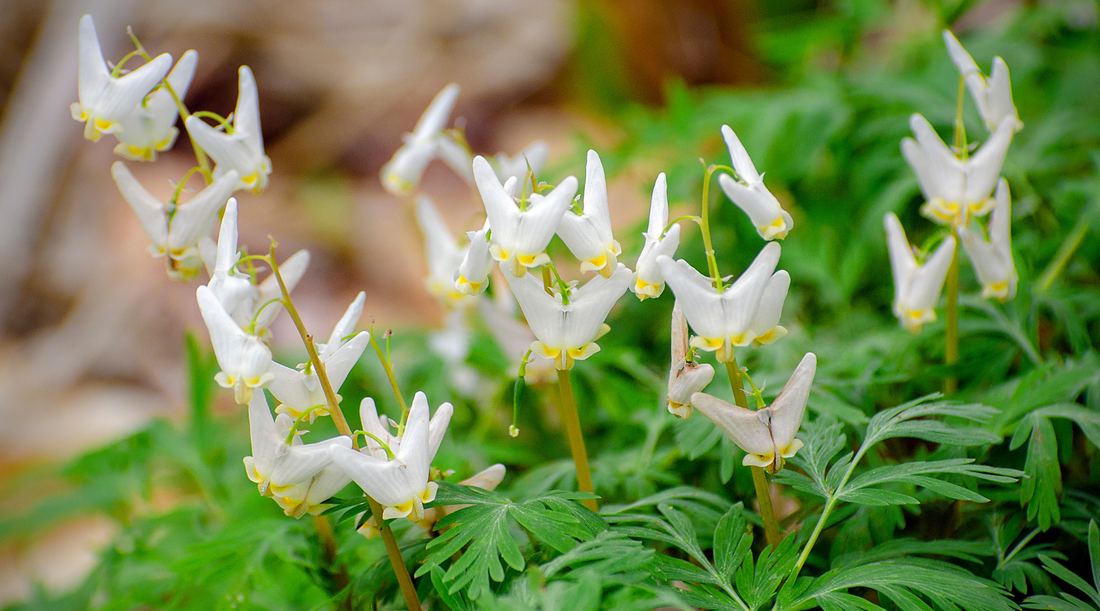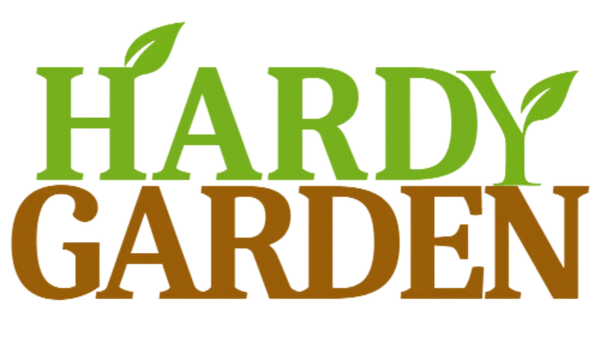
Exploring Ohio Native Plants: A Year-Round Plants For Your Garden and Lawn
Welcome to the exciting world of Ohio native plants! This adventure will be rewarding whether you are a seasoned gardener or just beginning to get your hands dirty. Buckle up your gardening gloves and explore the vibrant wildflowers Ohio boasts every season.
We've got you covered from the delicate blues of spring to the fiery reds of fall and even the subtle charms of winter. We'll introduce you to Ohio's most captivating native plants, tell you where to find them and share tips for thriving your garden.
But that's not all! We'll also show you how to create a haven for pollinators, like bees and butterflies, right in your backyard. Plus, we'll sprinkle in practical gardening advice to make your Ohio native plant landscape the talk of the town.
So, grab your gardening tools, and let's dive into the beauty of Ohio's native plants, ready to dazzle you all year!
The Richness of Ohio Native Plants
Ohio's native plant species are incredibly diverse, offering a different spectacle each season. Understanding the native flora of Ohio is the first step to creating a year-round garden that celebrates this biodiversity.
Spring Awakening
As the snow melts and temperatures rise, Ohio's native plants awaken from their winter slumber. Spring heralds the arrival of wildflowers like trilliums, bloodroot, and bluebells. Learn how to incorporate these early bloomers into your garden.
Summer Abundance
Summer is a time of abundance in Ohio's native plant world. Explore the beauty of coneflowers, black-eyed Susans, and milkweeds. Discover tips for attracting pollinators to your garden and creating a vibrant, buzzing ecosystem.
Fall's Fiery Palette
Autumn transforms Ohio into a symphony of colors. Native trees like the sugar maple and Ohio buckeye paint the landscape in brilliant shades of red, orange, and yellow. Learn to incorporate these trees into your garden for a breathtaking fall display.
Winter Interest
Even in the quiet of winter, Ohio's native plants have much to offer. Explore the beauty of evergreen hollies and the intricate patterns of snow-covered grasses. Discover how to design a captivating winter garden throughout the colder months.
Tips for Creating a Year-Round Native Plant Garden
Selecting the Right Plants
It is critical to select the correct native plants for your garden. Consider factors like soil type, sunlight, and water requirements when selecting. Opt for a mix of species blooming in different seasons, ensuring year-round interest.
Soil Preparation and Maintenance
The success of your native plant garden is dependent on proper soil preparation. Learn how to amend your soil to create the ideal growing conditions for Ohio's native flora. Regular maintenance, including mulching and weeding, is crucial to thriving your garden.
Attracting Wildlife
One of the joys of embracing native plants is the opportunity to attract wildlife to your garden. Learn how to create a haven for birds, butterflies, and other pollinators. Discover the importance of providing these creatures with food, water, and shelter.
Year-Round Garden Design
Designing a garden that looks stunning year-round requires careful planning. Explore design principles emphasizing structure and texture, ensuring your garden remains visually appealing even when not blooming.
Ohio Native Plants For Your Garden
Spring:
Trillium (Wake Robin):
Trilliums are springtime treasures, with their distinctive three-petaled flowers in white, pink, or red shades. These woodland natives thrive in shaded areas, making them perfect for the base of trees. Trilliums are sought after for their unique beauty and are often used in native plant gardens as early-season focal points.
Bloodroot:
Bloodroot is known for its striking white flowers and distinctive lobed leaves. These spring bloomers are found in wooded areas and provide a burst of brightness to shady spots. Native Americans traditionally used their rhizomes for medicinal purposes.
Virginia Bluebell:
With delicate, bell-shaped blue flowers, Virginia bluebells are a sight to behold in the spring. They prefer moist woodland environments and can be planted near streams or in rain gardens. Their vibrant blooms attract pollinators, adding life to your garden.
Dutchman's Breeches:
This unique plant is named after its unusual, upside-down, pantaloon-shaped flowers. Dutchman's breeches thrive in partial shade and well-drained soil. They're a conversation starter in any garden due to their peculiar appearance.
Wild Columbine:
With its red and yellow drooping flowers, wild columbine adds a touch of elegance to spring gardens. They attract hummingbirds with their nectar-filled blooms and do well in rocky, well-drained soil, making them a great addition to rock gardens.
Mayapple:
Mayapples have umbrella-like leaves and produce small, waxy white flowers in the spring, yielding green fruit resembling miniature apples. These plants can be found in moist woodlands and add a unique touch to your native plant garden.
Summer:
Purple Coneflower:
Purple coneflowers are summer superstars with vibrant purple petals and prominent orange centers. They are excellent pollinator magnets and are often used for their medicinal properties. Plant them in full sun to enjoy their prolific blooms.
Black-Eyed Susan:
These bright yellow flowers with dark centers are a quintessential summer sight. Black-eyed Susans are drought-tolerant and attract butterflies and bees. They are perfect for sunny spots in your garden and symbolize summer's glory.
Butterfly Weed:
Butterfly weed, as the name implies, is a favorite of butterflies due to its brilliant orange blossoms. In hot summer gardens, it thrives in well-drained soil with full sun.
Bee Balm:
Bee balm, also known as Monarda, offers a burst of color with its red, pink, or purple blooms. Aside from attracting pollinators, it's also used in teas and for its medicinal properties. Plant bee balm in a sunny or partly shaded area with well-drained soil.
Joe-Pye Weed:
Named after a Native American healer, Joe-Pye weed boasts large clusters of pink or purple flowers. It loves damp soil and grows tall, making it a standout in the back of your garden.
Swamp Milkweed:
As the name suggests, swamp milkweed thrives in moist conditions. Its pink and white flowers attract monarch butterflies, making it an essential addition to any butterfly garden.
Fall:
Sugar Maple:
In the fall, sugar maples produce foliage that is both visually striking and aromatic. These majestic trees are ideal for larger gardens and provide excellent shade.
Ohio Buckeye:
The Ohio buckeye tree offers fall interest with its distinctive palmate leaves and inedible nuts. It provides a beautiful fall canopy and is an Ohio native icon.
Red Maple:
Red maples are another stunning fall foliage tree, displaying fiery red leaves. They are adaptable to various soil types and grow well in urban settings.
Spicebush:
Spicebush adds a touch of gold to the fall landscape with its yellow leaves. In spring, it also produces small, aromatic yellow flowers. It's a great shrub for attracting birds and butterflies.
Prairie Dropseed:
This ornamental grass turns a rich golden color in the fall and is a valuable addition for adding texture and movement to your autumn garden.
Witch Hazel:
Witch hazel is known for its unusual fall-blooming, spidery yellow flowers. It adds a unique element to the fall garden and is often used for its medicinal properties.
Winter:
Eastern Hemlock:
These evergreen trees provide year-round interest with their graceful, feathery branches. They offer excellent winter cover for birds and other wildlife.
Winterberry Holly:
Winterberry holly stands out in winter with its bright red berries, which persist on the branches even after the leaves have fallen. It's a favorite of birds and adds a pop of color to the winter landscape.
Switchgrass:
This native grass remains upright and adds structure to your garden during winter, making it a valuable addition to your garden design.
Christmas Fern:
Its evergreen fronds remain green throughout the winter, adding a touch of life to the garden.
Wild Bergamot:
The dried seed heads of wild bergamot can be visually striking against a snowy backdrop, making it an intriguing choice for winter interest.
Snow Trillium:
Snow Trillium is a unique winter bloomer, showcasing white flowers against the winter landscape. It's a true testament to Ohio's native plant diversity.
Conclusion:
In Ohio, our native plants are like nature's calendar, changing with the seasons. From the colorful wildflowers of spring to the resilient greens of winter, there's always something to discover and enjoy.
By planting these native beauties in your garden, you create a stunning landscape and help our local wildlife, especially the vital pollinators.
So, get out there and explore the wonders of Ohio's native plants. They're not just plants; they're the heartbeats of our ecosystem. Happy gardening!
